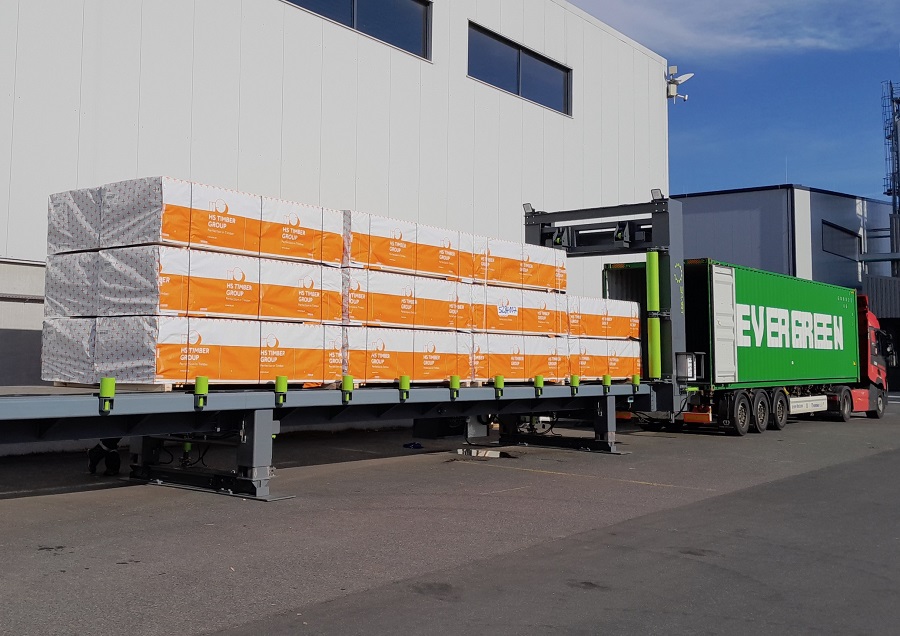The modern logistics world runs at full speed, all the time. Every warehouse, distribution centre, and manufacturing site is under constant pressure to move goods faster, safer, and more efficiently. Delivery windows are getting smaller, labour shortages are a constant headache, and lines of trucks queuing at the docks seem to never end.
But you don’t need to reinvent your entire system to improve overall performance. A straightforward upgrade, such as automated loading, can strengthen your workflow much faster than most expect.
Automating the loading of goods into containers and trailers is becoming one of the easiest and most impactful steps across the entire supply chain. And the results speak for themselves: faster operations, safer working conditions, and impressive cost savings that kick in from day one.
Let’s break down how one simple change can give a supply chain a serious upgrade, focusing on the three metrics that every logistics leader is obsessed with: speed, safety, and savings.
Speed: Loading in minutes, not hours
Speed is the lifeblood of every supply chain. When loading takes too long, everything grinds to a halt: dispatch schedules, delivery windows, customer expectations, and – let’s be honest – your own sanity.
Manual loading has its own inherent bottleneck: it relies heavily on people, forklifts, skill levels, shift timing, and sheer physical effort. One crew might finish a load in under an hour. Another, doing the same job on a bad day with a short staff, might take twice as long. That inconsistency causes a ripple effect that kills efficiency.
Automated loading systems flip the script.
Instead of a slow, unpredictable job that can take up to several hours, automated systems can complete a full load in as little as under 10 minutes – the same way, every time. That type of consistency is a total game-changer.
Why it matters:
- Trucks spend less time waiting at the dock.
- You eliminate slowdowns by reducing reliance on people.
- Scheduling becomes predictable and much easier to manage.
- You can handle more loads without extra space or staff.
- On-time performance improves across the board.
Once you see how consistent and fast loading becomes, it’s hard to imagine going back to the old manual process.
Safety: Less guesswork, less risk
If you’ve ever spent time around a loading dock, you know it can feel like organized chaos. Forklifts zipping back and forth in tight spaces. Workers manoeuvring heavy cargo. Containers with uneven floors, dodgy visibility, and awkward angles. It’s a recipe for accidents – and even one incident can bring everything to a halt, costing you tens of thousands.
Automated loading makes a huge difference by removing people from the most dangerous part of the operation.
What changes with automation?
- Forklifts stay outside the container instead of driving in and out.
- Workers no longer have to push, pull, or reposition heavy loads.
- The equipment follows a controlled, predictable path – no surprises.
- Ergonomic risks drop, and safety compliance becomes easier.
And here’s the bit often overlooked: safer environments actually boost morale. When operators and warehouse staff aren’t worried about cramped container interiors, awkward manoeuvres, or unpredictable forklifts, they can do their jobs with more confidence and focus.
Savings: The ROI that just keeps on giving
Let’s be honest – “automation” can sometimes sound expensive. But automated loading is one of those rare upgrades that brings in a return on investment that’s both fast and highly tangible.
Here’s how automated loading drives savings from day one:
Labour efficiency
Automated loading reduces the number of people needed per load. You’re not getting rid of jobs – you’re redeploying your team to higher-value tasks like quality control, supervision, and inventory flow management.
For companies struggling with labour shortages (which is everyone these days), automation becomes a lifeline.
Equipment costs
Forklifts are expensive to purchase, operate, maintain, and repair – and they’re also magnets for accidental damage. When forklifts stay outside containers, you get:
- fewer equipment hours,
- less wear and tear,
- fewer repair bills,
- less damage to container floors,
- fewer broken pallets or crushed cargo.
Add that up across hundreds of loads per month, and the numbers start to add up very fast.
Operational cost optimisation
Every minute a truck sits idle, you’re paying for it – whether in fuel, driver hours, missed time slots, or penalties.
Automated loading:
- cuts turnaround times dramatically,
- slashes detention and demurrage fees,
- frees up extra dispatch capacity,
- cuts down on pointless errors that require rework.
This is how automation moves beyond being a “nice efficiency tool” and becomes a “serious cost reducer”. Those savings aren’t just some vague idea – they’re plain as day on the bottom line.
Bonus benefit: Predictability that powers better planning
Speed, safety, and savings might be the main benefits, but automation also gives you another hidden superpower: predictability.
With loading times as consistent as clockwork, your entire supply chain becomes a lot easier to manage. You can forecast more accurately, plan labour more efficiently, and keep trucks moving without unexpected delays.
Predictability is a real lifesaver for dispatchers, planners, drivers, and warehouse managers, and it’s also a huge relief for your customers.
In a world where things are guaranteed to be unpredictable, predictability is pure gold.
Final thought: Automation makes a difference
Automated loading doesn’t replace people, but takes the repetitive, time-consuming, and risky parts of the workflow off their plates.
With solutions like SmartTEH’s container and truck loading systems, that final manual bottleneck is handled consistently and efficiently, allowing the rest of your warehouse operations to run more smoothly.
In today’s fast-paced supply chain environment, automation is a practical step toward a safer, more reliable, and efficient operation. For companies already using modern warehouse management systems, conveyors, or planning tools, integrating automated loading is a natural next move – one that often delivers measurable benefits sooner than expected.







